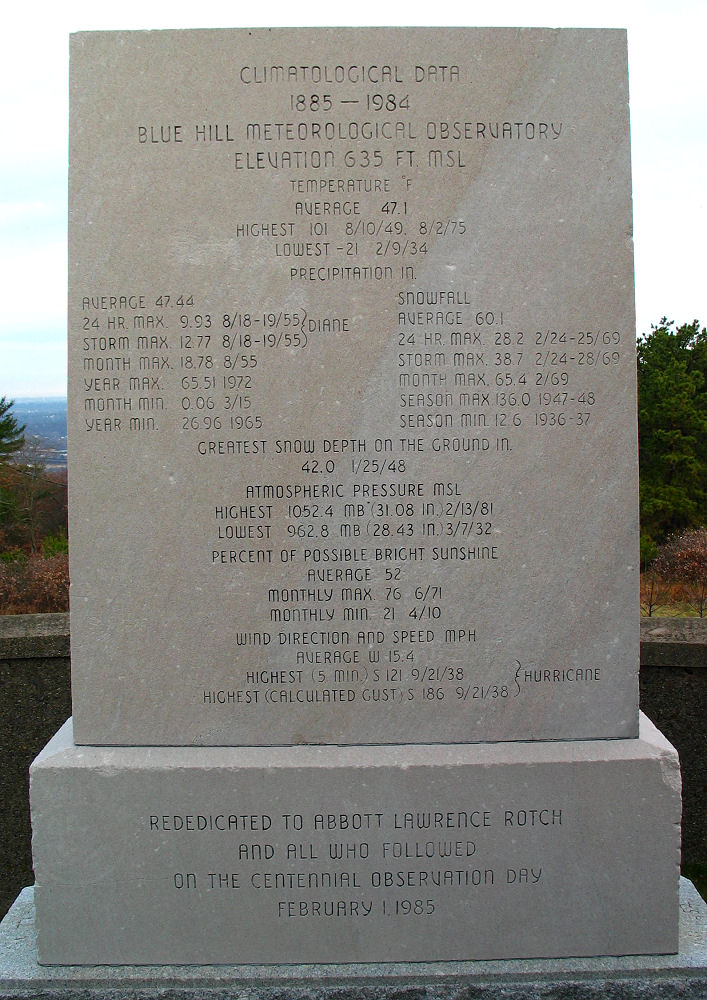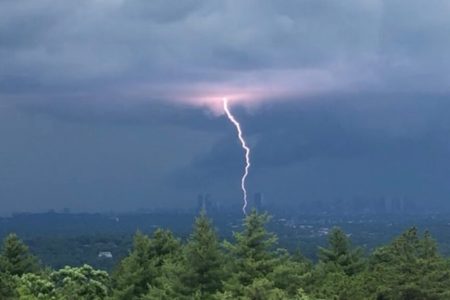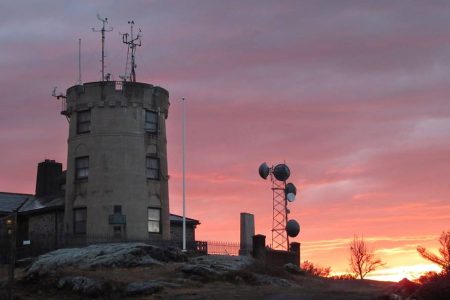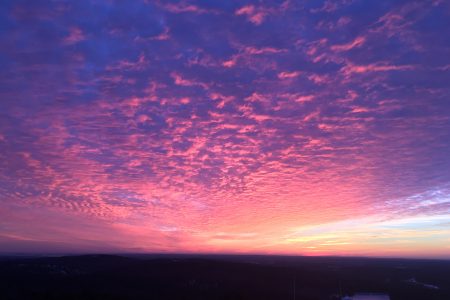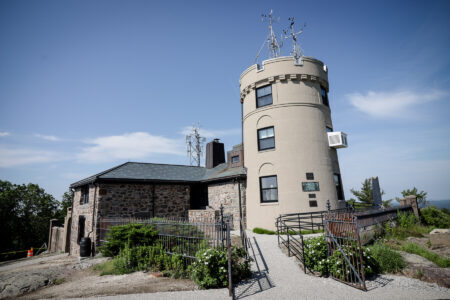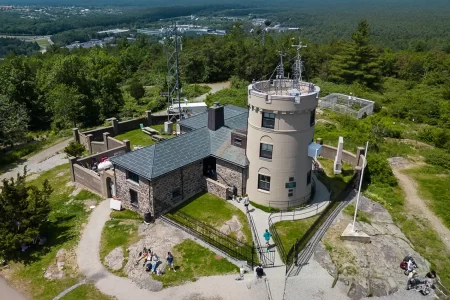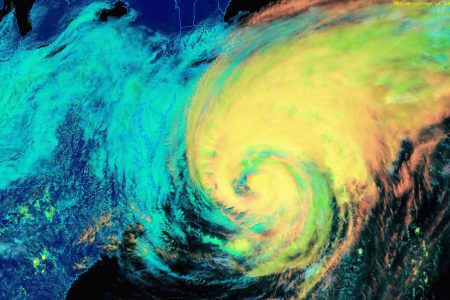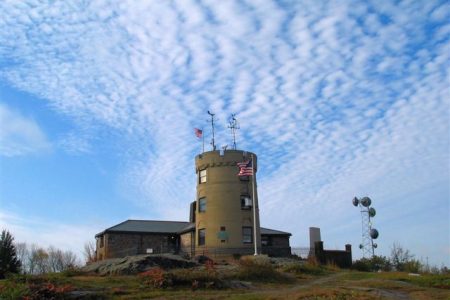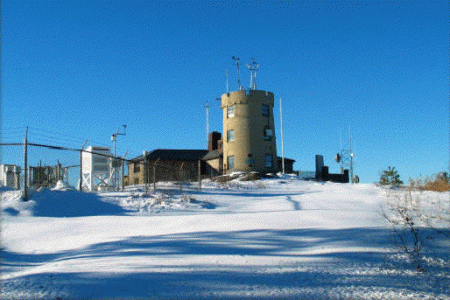Climate & Weather
Our climate and weather records are a unique resource for science research and education.
Here you will find official BHO climate information including daily weather discussions, monthly data forms, monthly and annual graphics and text summaries, long-term climate plots, and BHO climate data. Current conditions are provided by the automated Davis Vantage Pro instrumentation at BHO and automated wind gusts are provided by Vector Instruments and R.M. Young wind sensors. There is also a list of our favorite weather and forecasting websites.
Daily Discussions
- Tuesday, November 25, 2025
- Monday, November 24, 2025
- Sunday, November 23, 2025
- Saturday, November 22, 2025
- Friday, November 21, 2025
- Wednesday, November 20, 2025
- Wednesday, November 19, 2025
- Tuesday, November 18, 2025
- Monday, November 17, 2025
- Sunday, November 16, 2025
- Saturday, November 15, 2025
- Friday, November 14, 2025
- Thursday, November 13, 2025
- Wednesday, November 12, 2025
- Tuesday, November 11, 2025
- Monday, November 10, 2025
- Sunday, November 9, 2025
- Saturday, November 8, 2025
- Friday, November 7, 2025
- Thursday, November 6, 2025
- Wednesday, November 5, 2025
See all ›
Monthly Summary F-6 Forms
See all ›
Weather Archives
See all ›
Climate Research
See all ›
Observatory Climate Data
Extensive work is in progress to transfer over 135 years of primary daily data observations including maximum and minimum temperature, precipitation, snowfall, snow cover, wind speed, sunshine and other parameters. This process will fill gaps and remove inconsistencies in the existing data base and begin the process of digitizing data that has never been tabulated before.
Temperature
The daily highest and lowest extreme temperatures are recorded at Blue Hill every day using two different thermometers in the white, shuttered Hazen temperature shelter within the instrument enclosure on the summit to the northeast of the Observatory.
Precipitation
Precipitation is recorded daily using a variety of equipment in the outdoor instrument enclosure near the Observatory. Manual readings of precipitation at three, six and 24-hour intervals are obtained by inserting a measuring stick into the standard 8-inch rain gauge…
Bright Sunshine Duration
A Campbell-Stokes sunshine recorder has been in use to measure bright sunshine duration at BHO since 1886, and this represents the longest such record of sunshine in North America. The parameter is referred to as bright sunshine since sunlight must be of sufficient intensity to scorch a paper card…
Learn more ›
Current Research Projects and Collaborations
Ongoing research projects and collaborations at BHO cover a wide range of topics related to our long-term climate record, and these activities are supported by staff and professional scientists as well as high-school and college student interns and other volunteers. Listed below is a sample of current projects.
Wind Speed Decrease
The annual mean
wind speed has been dropping steadily since around 1980, and BHO staff are investigating the possible causes with our extensive data sets. We are also working in collaboration with a scientist from Spain, Cesar Azorin-Molina, who specializes in this topic in Western Europe where decreasing wind speeds are also being observed. Among the potential causes of the wind speed drop being investigated are the regional regrowth of vegetation, which can slow surface wind speeds, or shifts in the storm track, which may be caused by changes in the general circulation in response to climate change.
Bright Sunshine Trends
A Campbell-Stokes sunshine recorder has been in use to measure
bright sunshine duration at BHO since 1886, and this represents the longest such record of sunshine in North America. Trends in recent decades are believed to be related to global dimming (in the 1970s and 1980s) and subsequent global brightening (since 1990) due to the increase and the later reduction of atmospheric aerosols over these decades. Work is in progress to distinguish the combined effects of clouds and aerosols on the sunshine record. We are investigating this topic in collaboration with other researchers in Spain. In addition, recently tabulated daily sunshine data have been studied to assess the presence of climate change signals, and a
journal article based on this work was recently published in the Bulletin of the American Meteorological Society.
Daily Climate Data Digitization
Extensive work is in progress to transfer more than 135 years worth of primary daily data observations including maximum and minimum temperature, precipitation, snowfall, snow cover, wind speed, sunshine and other parameters. This process will fill gaps and remove inconsistencies in the existing data base and to begin the process of digitizing data that has never been tabulated before. The objective is to generate the best possible collection of BHO daily climate data to support ongoing and future climate research projects and educational activities.
Earthquake Monitoring
In collaboration with Dr. Alan Kafka, the Director of Boston College’s
Weston Observatory, Blue Hill purchased and installed a
“Raspberry Shake” seismograph in Fall 2019. This seismograph provides a new site at the Blue Hill Observatory for monitoring earthquakes around the world and in the local area. Small differences in the amplitude and arrival times of the waves produced by earthquakes in distant places that travel around and through the Earth provide information about characteristics of the earthquakes and about the interior of the Earth. As of early 2020, several earthquakes have been measured by the instrument at Blue Hill, and the results are being compared with observations from other seismographs in New England and around the world.
Forecast & Weather Resources
 NWS-Norton Forecasts
NWS-Norton Forecasts
Local National Weather Service Forecasts
Visit website NOAA WPC – Model Guidance
NOAA WPC – Model Guidance
NOAA Weather Prediction Center Model Guidance
Visit website NOAA WPC – Surface Archive
NOAA WPC – Surface Archive
NOAA Weather Prediction Center Surface Analysis
Visit website
See all ›
Abbott Lawrence Rotch Memorial Monument
A large stone monument near the Observatory was originally erected in 1912 in honor of the Observatory’s founder, Abbott Lawrence Rotch. It was later etched with a summary of the climate means and extremes that were recorded during the Observatory’s first century (1885-1984). An inscription on the back of the monument reads: “In memory of Abbot Lawrence Rotch, founder and director of the Blue Hill Observatory, pioneer in the study of the upper air, a life devoted to science for the good of mankind”.
Learn more ›
Questions about our Weather or Climate Records? Contact Us Online:
